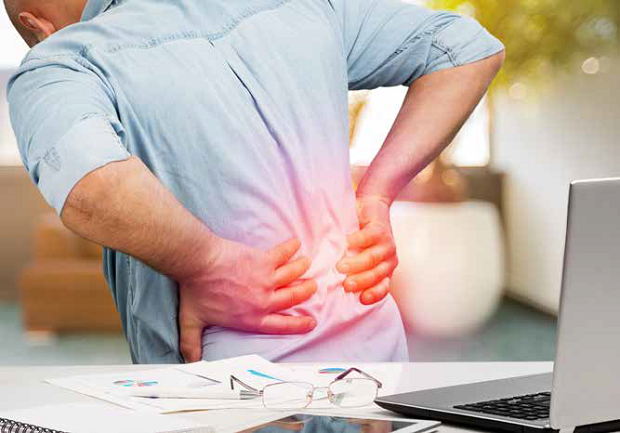
Back pain is one of the most prevalent conditions that has seen a spike during the COVID-19 pandemic.
COVID-19 may be taking the top spot as the main health concern of current times, but other ailments are not lagging far behind. With a majority of the population working from home since the start of the pandemic, long hours in front of the computer, poor ergonomics and a lack of physical activity have contributed to an increase in the number of people with lower back pain.
“Lower back pain is a common pain condition that most of us encounter at least once in our lives. Thankfully, studies have shown that 80 to 90 per cent of patients with back pain recover within six weeks,” said Dr Adeline Leong, Consultant, Department of Anaesthesiology and Pain Medicine, Sengkang General Hospital and Singapore General Hospital.
Due to the complex nature of back pain, it is important to exclude serious causes to determine the appropriate treatment. Medical attention must be sought when one experiences infection (fever, chills, rigor), trauma (pain that occurs after a fall or accident), unintended and significant weight loss, uninvestigated back pain that has lasted more than six weeks, progressive weakness and numbness of the lower limbs, and onset of bladder and bowel incontinence.
“These symptoms are seen more frequently in at-risk individuals, including elderly persons above 70 years old, immunocompromised patients, and patients with osteoporosis or cancer,” Dr Leong noted.
Once these red flags have been ascertained and/or the cause of the lower back pain has been diagnosed, the management of back pain can then be tailored accordingly.
Chronic back pain
Frequent or continued pain exceeding three months would be generally defined as chronic back pain. In these cases, patients will be recommended sustainable, long-term treatment that includes not only medication, but also multidisciplinary management including physical, psychological and social support.
“Medications and interventions are most beneficial when dealing with acute episodes of chronic back pain,” Dr Leong said, adding that short-acting painkillers such as paracetamol and anti-inflammatory medications should be taken only when needed, while nerve pain medications should be taken daily to target nerve-related pain or sensitised nerves.
Some patients may require interventions, such as injections containing local anaesthetics and steroids, to help reduce pain and inflammation.
In the event that response to conservative treatment is poor or if the cause of pain is amenable to surgery, surgical procedures may sometimes be recommended. These include spine decompression or stabilisation surgery.
Read more: Back pain: Tips to manage and when should you see a doctor. Click here to find out.
Alternative treatments
Physiotherapy has been a mainstay of active self-management of chronic back pain. Regular and sustained periods of stretching and exercises improve and preserve function while preventing stiffness and weakness. Moderate exercises like swimming, aquatic therapy and stationary biking can be very useful for patients with chronic back pain.
Increasingly, acupuncture has also been recognised as an effective treatment for chronic back pain. A few sessions of acupuncture are usually required as part of a treatment course to determine its efficacy.
“Overall, managing chronic back pain requires a shift in perspective to focus on activity and function. Lifestyle modifications, good coping skills and mental well-being are crucial to sustaining the management of chronic back pain,” said Dr Leong.
For instance, activities should be paced such that there are adequate breaks in between to avoid triggering or exacerbation of the underlying back pain. Concomitant mental health issues like depression and anxiety must be addressed, as they can worsen chronic pain.
As chronic back pain can be taxing to manage on one’s own, social support plays an important role in helping patients cope. Some pain management centres offer group programmes that take a holistic approach to chronic back pain management. These incorporate physiotherapy, psychological strategies and support groups that help kick-start and maintain proper management of the condition.
Get the latest updates about Singapore Health in your mailbox! Click here to subscribe.













 Get it on Google Play
Get it on Google Play